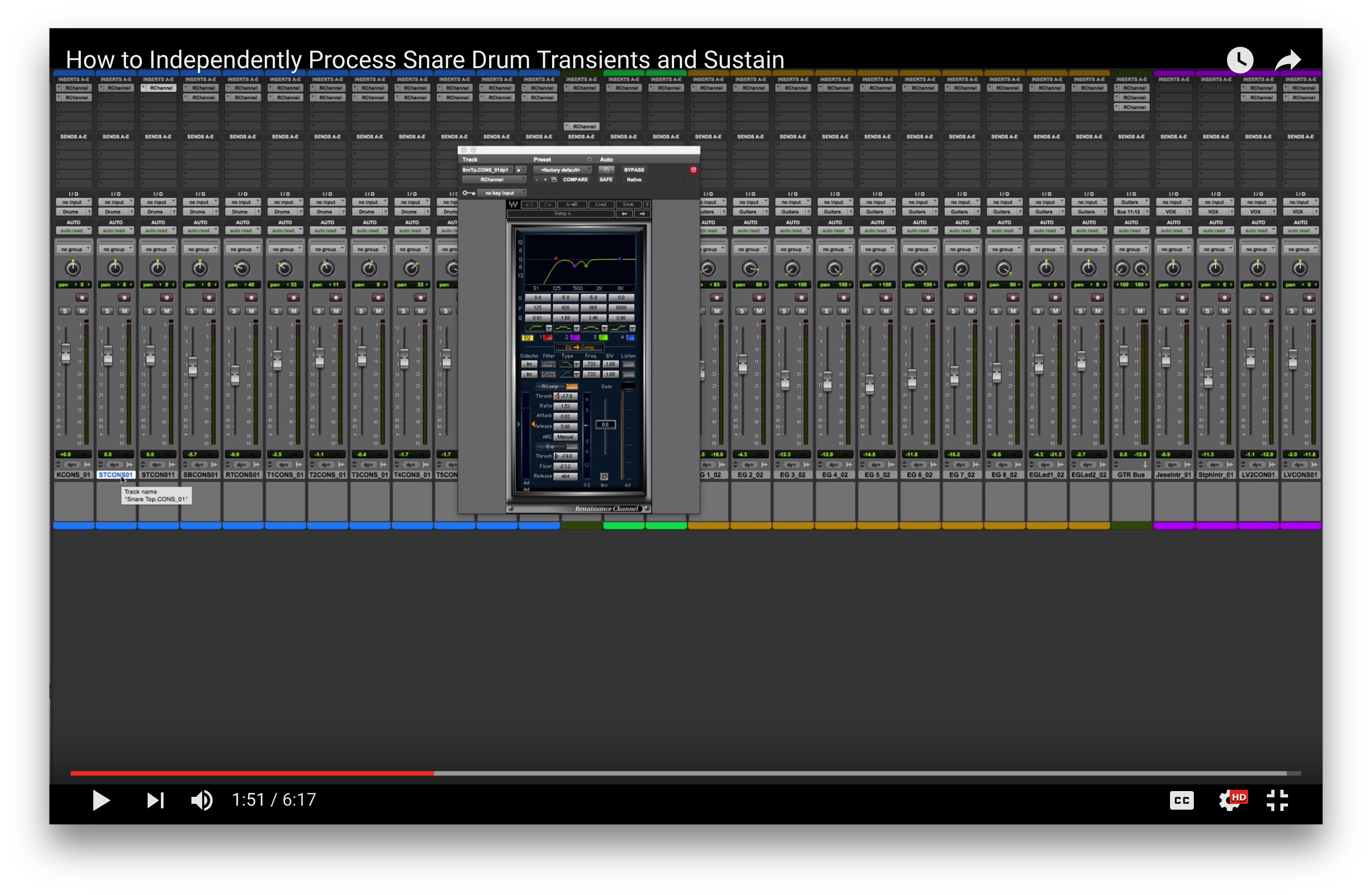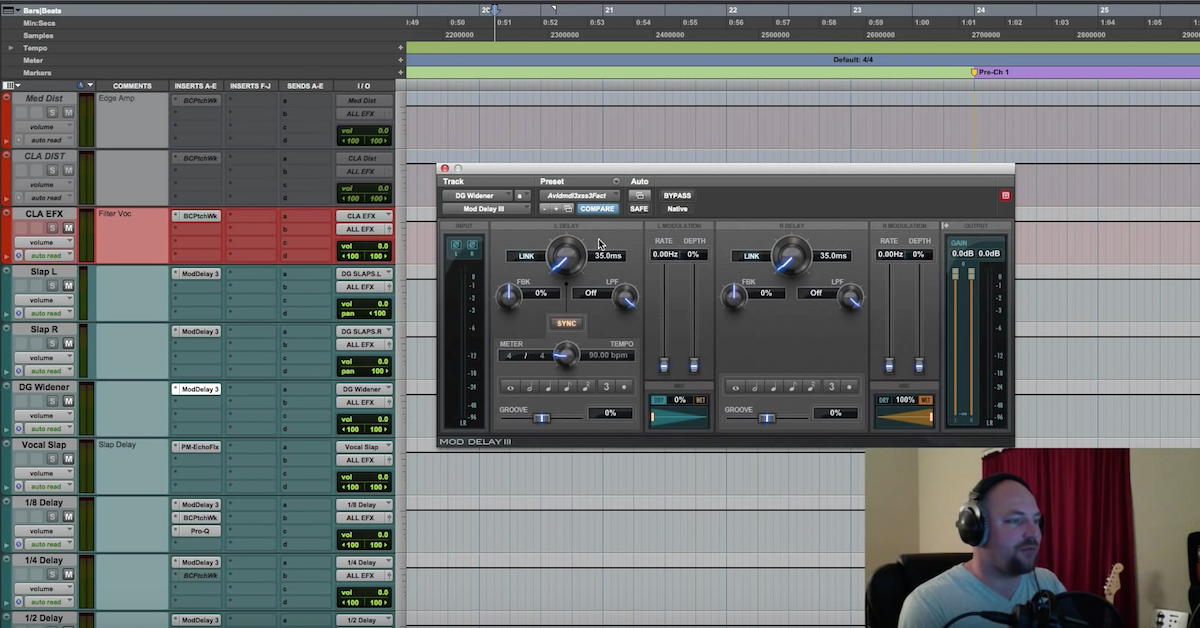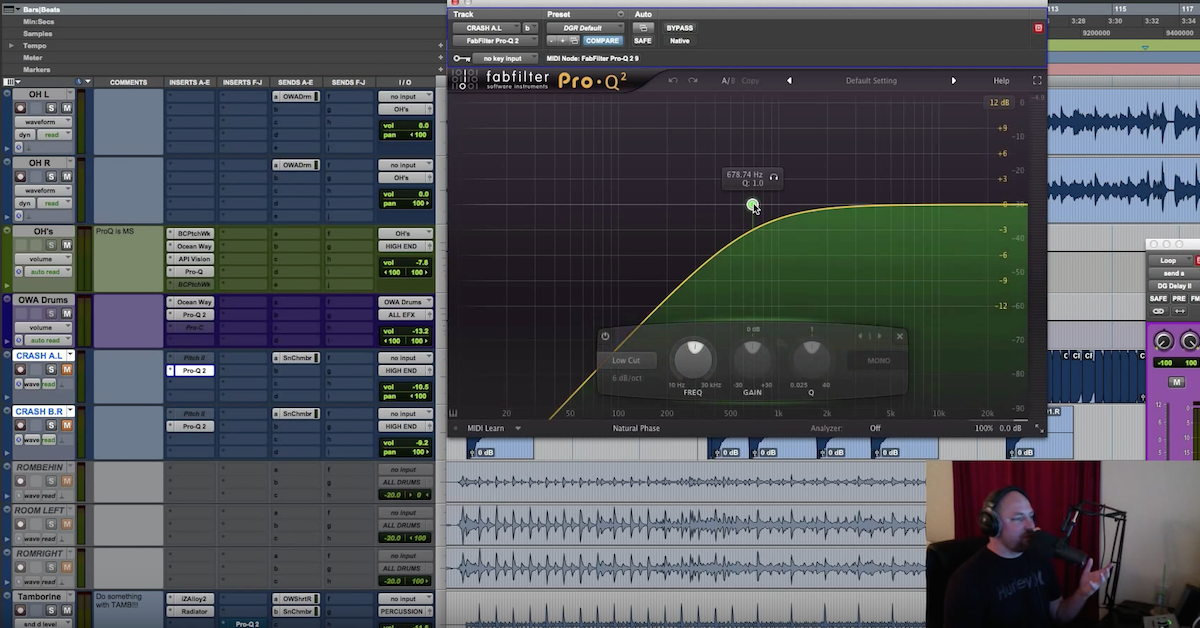How to Enhance Drum Transients in a Mix
In this video, I’m going to demonstrate a technique that I came up with the enhance the transient of a drum hit. This could be for a snare drum, kick drum, toms… It doesn’t really matter.
Here it’s all about how to isolate the transient of the hit, then add some extra effects to saturate it and excite it, and that sort of thing. Now I’m going to blend in, in parallel, that processed transient part of the drum hit, along with my original sound.
So, let me go ahead and play you back what my drums sounded like before I did any additional processing.
[drum mix]
So you can hear, I’ve got a basic pop rock groove going on. What I would like to do is enhance the transient of my snare drum. So what I’m going to do is some parallel processing, where I isolate the transient of it, then I add some extra effects there and blend that in side by side with my original drum sound.
So, what I’ve already done is I went into my snare top channel right here, and I duplicated it a couple of times. So one of those duplicates is right here. It’s called “The Transient.”
What I’m going to be primarily using here is some plug-ins that perform transient shaping. So there’s a couple. I’ll show you the Sonnox Oxford Transmod, also the Waves Trans-X, because it’s multi-band, but you could substitute in almost any style transient shaper plug-in, and do a similar kind of thing.
So, this effect by itself, if I isolate it, just my snare top mic, I can use it to increase the amplitude at the transient of each one of these snare hits. So it sounds like this.
[snare top]
So, this plug-in is one way that you can make the transient louder. However, it doesn’t, by itself, remove the rest of that sustain of the plug-in. So, what I’ve actually done is I created a separate track over here called “The Inverse.”
I’m going to be combining these things together, and in fact, the inverse is a track where I’ve inverted the polarity. So it’s the opposite of this track over here. So, what they’re going to be doing is combining together actually to do destructive interference where they cancel each other out, as long as I don’t do any other processing.
So if I bypass all the effects, and bring this one in, when I add them together, they’re being bussed over here to snare transient, this auxiliary track, you’ll see that they actually cancel each other out, and there’s no signal that’s left over.
[snare drum]
So the thing to know is, whenever you do this, as long as the signals are identical, they cancel each other out. But if there’s any difference, or any change in one of the signals, that’s going to be left over, and that’s going to go through.
So what I’m going to do then is blend these two signals together, but I’m going to change the transient on one of the tracks. I’m going to increase the amplitude so that all that’s left over when I combine them together is just the transient. So it’s a way to cancel them out and remove the sustain.
So this is what it sounds like.
[snare drum]
So, the effect I’m doing ends up being kind of a lot like a gate, where you have a threshold, and you can determine at what level the processing kicks in. It also has this overshoot button to change what’s the duration… You have a lot of fine-detailed control over here on how long you want your transient to last, or how short you want it to be. So I’ll play around with that a little bit.
[snare drum]
Now I’ve got the transient isolated. I’m going to go in and add some extra effects to enhance it a little bit. So, for instance, maybe I’ll go in and use a free plug-in here. The Softube saturation knob. I’m going to just drive it and add some extra harmonics going on there.
Another one that would be great here to use would be the Sound Toys Decapitator. So, really saturate it. Add this in. Or, another one I think that might work well is to go in here and use the Waves Aural Exciter model. You can play around with some of these things.
[snare]
So now what I’ve done is I’ve isolated that transient, and I can blend it in with all this extra saturation and excitement that I’ve put on it, and blend that in with my original drum sound.
[drums]
Now that might be a little overkill, but it gets the point across about how you’re just blending in that extra part of that transient signal.
So, the last thing I’ll demonstrate then is that if you want even more fine grained control and detail over isolating what part of the transient you want, you can use a multi-band processor like this one right here from Waves where you could just add in some low frequency in your transient, or that mid-range knock of the snare drum, or more of the top end where you add that brightness or that snap to it.
So if I isolate these things together, I’ll demonstrate that.
[snare]
So let’s try that in parallel.
[drums]
So this method of isolating that transient gives you a lot of control. You can do all kinds of spectral shaping to it, saturation, excitement, and really tailor that transient part of your drum hit to whatever kind of thing you’re going for. If you want it to be really snappy, or if you want it to be really beefy at the transient, these kinds of ways of isolating the signal, processing the signal, treating it with other effects, really opens up a whole world of possibilities for how to process the sound of a drum hit.





